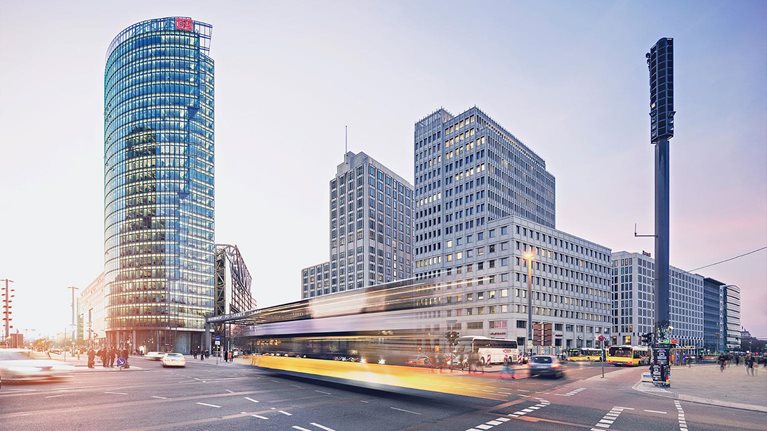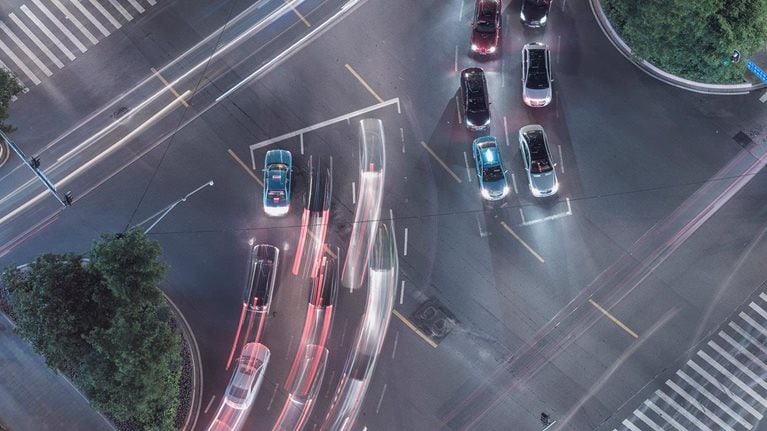When it comes to infrastructure, the developed world is running on a hamster wheel. In Europe, we estimate that governments spend 50 to 70 percent of their transportation infrastructure budget on maintaining or replacing aging existing systems. These upgrades are especially complicated and expensive as running traffic needs to be maintained, sometimes requiring the construction of provisional solutions, and a variety of stakeholder interests—those of infrastructure users, neighbors, developers, and investors—need to be addressed.
Stay current on your favorite topics
Furthermore, the vast majority of existing infrastructure is not ready for the future of mobility. Automation, connectivity, electrification, and shared mobility are upon us, but the road and rail infrastructure requirements to facilitate these technologies are often not considered when rebuilding individual projects. In short, there exists no integrated vision of how to equip the infrastructure of the future. To build one, we need to answer a long list of questions, such as how electricity supply will be provided to fast-charging stations on motorways, how we will provide connectivity for autonomous driving, and how we manage the integration of old and new train control systems.
To prepare for the future of mobility, operators need to leap off the revolving wheel of repair. They need to develop an understanding of the desired end state and then take a hard look at their operating models. And they need to optimize current costs, adjust financing mechanisms, develop new competencies, collaborate with regulators to facilitate policy changes, cooperate with other infrastructure stakeholders, and transform their management models to break the constant repair and slow technological cycles. Those who start now will move to a new, modern mobility system with a better user experience faster, and at a lower cost, than those who wait.
Would you like to learn more about our Capital Projects & Infrastructure Practice?
What owners and operators need to do now
Operators need to start by developing a few likely scenarios describing possible future needs. These scenarios must consider upcoming technological developments as well as varying user preferences. They also should highlight the expected socioeconomic benefits and outline an approach to maximize them. (For more on McKinsey’s research into modeling city mobility strategies, see “The road to seamless urban mobility.”)
Once a target scenario is established, operators can develop a road map for turning it into reality. This road map needs to offer details on resources—including required R&D—and potential financing options, as well as implementation time with necessary regulatory approval and testing periods. In plans for both new and rebuilt infrastructure, the map must account the needs of today and the future—for example, ducts for fiber and power cables to enable electric-car charging stations.
The target scenario will anchor operators’ day-to-day operations. As conditions and the speed of technological development change over time, operators should build regular updates to the road map into their workflow to ensure they maintain their trajectory toward the target scenario.
Optimize costs and adjust financing mechanisms
Two methods are available for infrastructure owners to secure the capital needed to prepare for the future of mobility: cutting costs, and rethinking traditional financing mechanisms. On the cost-cutting front, procurement is often ripe for cost optimization. Current, drawn-out processes tend to involve months or even years of analysis, tendering, respecification, contracting, and deployment. By bundling smaller projects, defining functional specifications, and reworking contracts for performance, operators could expedite the process and significantly improve cost efficiency.
Additionally, operators and regulators need to rethink traditional financing mechanisms that may have served well in the past but cannot support the required transformation of the system. For instance, instead of having separate financing regimes and incentive mechanisms for capital and operating expenditures, they could take an integrated view— which can create greater incentive to invest up front to save money in the long run. Given the long-term, system-wide view needed, operators—particularly public entities—could abandon their yearly budgets in favor of securing multiyear financing. And this system-wide view should also inform replacement decisions, rather than relying solely on technical lifetime and economic depreciation rules.

Declining bus ridership: Improving the efficiency of transit networks
Develop new competencies and processes
Adding future-oriented features—such as embedded sensors—to new and rebuilt infrastructure will enable autonomous vehicles and smart traffic-control systems, among other technologies, in the coming years. However, these features are not reflected in most operators’ current planning and investment cycles. Today, operators tend to plan on a project-by-project basis, backed by a relatively static regulatory framework of technologies that are already approved, widely available, and easily deployed.
Preparing for both faster development cycles and the rollout of various integrated platforms will require operators to acquire new competencies in planning, maintenance, and operations. To acquire these new competencies fast, operators can engage in partnerships with nontraditional technology suppliers. They may also consider building a separate business unit to bypass standard company processes. Norway has established a separate road administration to speed up cost-efficient development and construction of selected highways, effectively creating a state-owned start-up for infrastructure innovation.
Collaborate with regulators to facilitate policy changes
As technology pushes mobility forward, it will be crucial to ensure proper regulations are in place to facilitate progress. In addition to essential safety tests and approvals, regulations can take a decade or more to design and implement, while innovation cycles can upend industries in under a year, so most regulations are already far behind where they need to be. We anticipate that autonomous-car technology will be ready in 2023, but regulation modifications will take an additional five to seven years—meaning autonomous cars won’t be fully integrated into the transport system until 2030.1
Operators will therefore need to work with regulators to adapt approval processes and help keep pace with accelerated technology development. Operators can also collaborate with regulators in thinking about how they build up their own new competencies, working together with them to define future regimes.
Cooperate with other infrastructure stakeholders
Finally, each new technology will come with costs and benefits to a variety of stakeholders, including infrastructure users, infrastructure operators, regulators, and financing bodies. As such, each of these stakeholders brings different perspectives to how to prepare infrastructure for the future of mobility. For example, railway network operators can benefit from fewer signals and less physical equipment on the track, but they need to balance their approach with the cost of refitting their train control units.
To minimize cost and maximize the benefits of new technologies, an integrated perspective on cost, benefits, and speed to implementation is necessary. Transport infrastructure operators—as a kind of natural monopoly—will be expected to orchestrate this process. They will also be expected to create transparency on socioeconomic questions, such as how to distribute the cost of new technologies between different users, and how to balance opportunities for more traffic with noise reduction requirements for neighbors.
Transform the management model
This elevated responsibility requires a new management model for infrastructure operators. Today’s planning horizons of 30 years and more need to be complemented by much shorter reviews for new technologies. Regional allocation of responsibility that served well for maintenance and even newly built infrastructure should be complemented by a central responsibility for the technical platforms of the future. Interdependencies of vehicles and infrastructure will grow, and so integrating users into strategy development and planning will be crucial. Finally, owners will need to think in terms of scenarios and options to create future-proof infrastructure. While almost anyone can drive on a road, the wrong traffic control system or sensors might quickly prove to be a futile investment.
Developing competencies, rearranging balance sheets, updating processes—the future of mobility presents many challenges, but it is inevitable. As such, operators can look at this transformation as an opportunity, and the cost of waiting to get started is huge. By adapting and laying the groundwork now, operators can avoid a mountain of expensive retrofitting and alleviate stakeholder distress across the spectrum.


